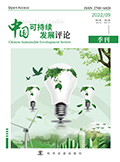

西藏自治区人口演变与城镇化是青藏高原生态安全屏障建设和可持续发展的关键影响变量。在详细描述1982年到2020年西藏人口数量、结构、分布格局及其演变的基础上, 研究了西藏城镇化发展的主要问题及推动可持续城镇化的对策。研究发现最近10年西藏人口发展格局发生了转折性变化, 城镇化快速发展正成为推动西藏人口格局演变的核心因素; 然而人口过度分散, 城镇体系结构不合理, 主要城镇服务功能不足, 对居民的服务不足; 人口与城镇最主要的两大集聚区“一江两河”地区和色尼-卡若区域城镇化发展面临着建设用地严重短缺及峡谷地形地貌的制约, 生态保护压力大等问题。研究提出以保护青藏高原生态环境和促进人民群众民生福祉“双赢”为基础, 适应城镇化快速发展和人口迁移加速的趋势推进人口集聚, 并以人口服务全覆盖为基础, 通过构建“中心城市-县城”为主干的二级城镇体系格局, 提高和完善县城的服务功能; 因地制宜解决城镇拓展用地难题。最后以异地合作社的模式保障转移人口的收入不降低, 以人力资本提升、社会保障兜底、生态产业发展三条措施防止进城农牧民返贫。
Population evolution and urbanization in Xizang Autonomous Region are key variables influencing the construction of ecological security barrier and sustainable development on the Qinghai-Xizang Plateau. Based on a detailed description of the number, structure, distribution pattern and evolution of the population in Xizang from 1982 to 2020, this paper studies the main problems of urbanization development in Xizang and the countermeasures to promote sustainable urbanization. It is found that in recent 10 years transforming changes have taken place in Xizang’s population pattern, and the rapid development of urbanization is becoming the core factor. However, the over-dispersed population, unreasonable urban system and insufficient service function of major cities and towns are the main problems faced by Tibet and its sustainable development of urbanization. The two most important agglomeration areas of population and towns, the “One River and Two Tributaries” area and the Seni-Karub area, are facing serious shortages of construction land, the constraints of canyons, and the pressure of ecological protection. Accordingly, the study proposes several suggestions to build a sustainable development model on the Qinghai-Xizang Plateau, based on “win-win” efforts to protect the plateau’s ecological environment and promote people’s livelihood. First of all, the population distribution pattern should be changed from “mainly scattered” to “mainly concentrated” to adapt to the rapid development of urbanization and the acceleration of population migration. Secondly, based on full coverage of population services, a secondary urban system pattern of “central city-county town” should be constructed to improve and perfect the service function of county towns. Thirdly, the problem of land use for urban expansion can be solved according to local conditions without damaging the ecological environment. Finally, the model of non-local cooperatives is used to ensure that the income of the transferred population does not decrease, and the three measures are taken to prevent farmers and herdsmen in cities from returning to poverty, including human capital improvement, social security supplement, and ecological industry development.